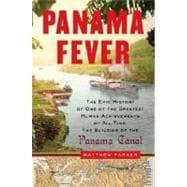
MATTHEW PARKER is the author of The Battle of Britain and Monte Cassino. He lives in London, England.
| List of Illustrations | |
| Preface: The Battle to Build the Canal | |
| The Golden Isthmus | |
| "The Keys to the Universe" | p. 3 |
| Rivalry and Stalemate | p. 12 |
| Gold Rush | p. 21 |
| "A Natural Culminating Point" | p. 28 |
| The Competing Routes | p. 40 |
| The French Tragedy | |
| "Le Grand Francais" | p. 49 |
| The Fatal Decision | p. 60 |
| The Riches of France | p. 71 |
| "Travail Commence" | p. 89 |
| Fever | p. 107 |
| Jules Dingler | p. 121 |
| Annus Horribilis | p. 144 |
| Collapse and Scandal | p. 169 |
| The American Triumph | |
| Heroes and Villains - The "Battle of the Routes" | p. 199 |
| "I Took the Isthmus" | p. 219 |
| "Make the Dirt Fly" | p. 253 |
| Yellow Jack | p. 284 |
| Restart | p. 304 |
| The Railroad Era | p. 328 |
| The Digging Machine | p. 343 |
| Segregation | p. 375 |
| "The Army of Panama" | p. 395 |
| "Hell's Gorge" | p. 420 |
| "Lord How Piercing!" | p. 440 |
| The Land Divided, The World United | p. 455 |
| Postscript Whose Canal Is It, Anyway? | p. 462 |
| Notes | p. 473 |
| Select Bibliography | p. 509 |
| Index | p. 517 |
| Table of Contents provided by Blackwell. All Rights Reserved. |
The New copy of this book will include any supplemental materials advertised. Please check the title of the book to determine if it should include any access cards, study guides, lab manuals, CDs, etc.
The Used, Rental and eBook copies of this book are not guaranteed to include any supplemental materials. Typically, only the book itself is included. This is true even if the title states it includes any access cards, study guides, lab manuals, CDs, etc.
Excerpted from Panama Fever: The Epic Story of One of the Greatest Human Achievements of All Time-- the Building of the Panama Canal by Matthew Parker
All rights reserved by the original copyright owners. Excerpts are provided for display purposes only and may not be reproduced, reprinted or distributed without the written permission of the publisher.